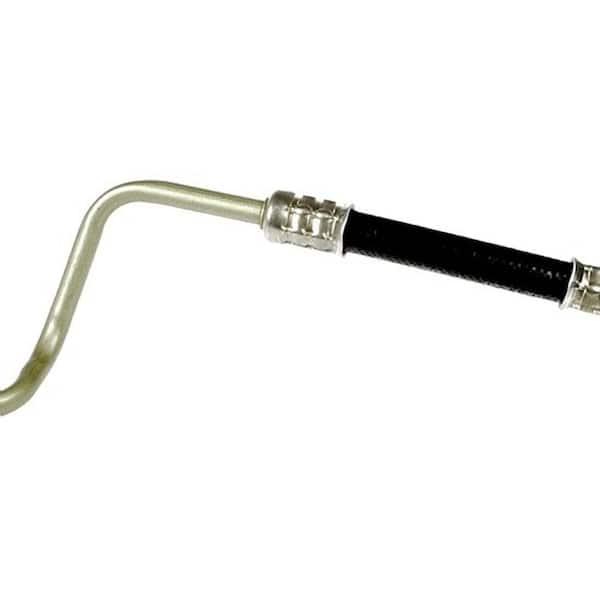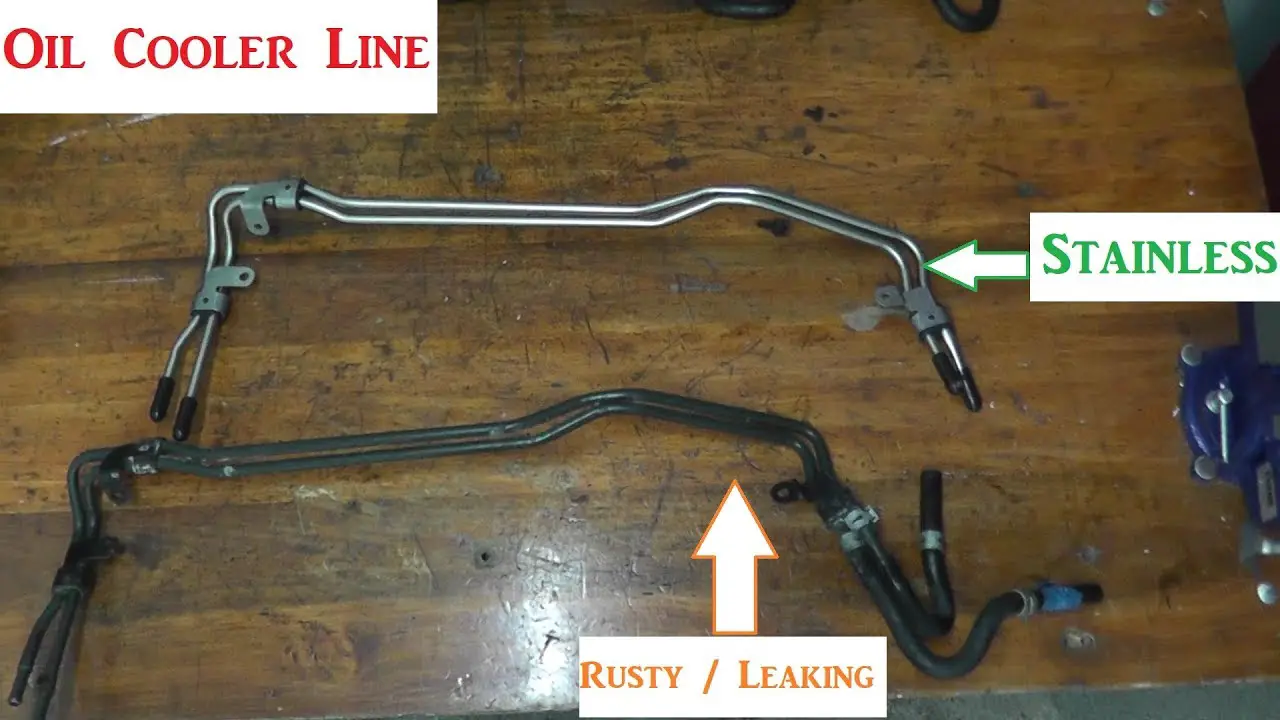A transmission cooler line is a component of an automobile’s powertrain system. It is responsible for transferring heat from the transmission to a radiator, which then dissipates it away from the car. The lines are typically made of metal or rubber and connect to both the transmission and radiator.
They help keep the temperature within acceptable levels so that your vehicle can stay in optimal running condition and prevent damage due to excessive temperatures in the transmission fluid. Transmission coolers are especially important when driving in hot weather or if you’re hauling heavy loads with your vehicle, as these activities generate extra heat that needs to be removed efficiently.
A transmission cooler line is a vital component in the cooling system of an automobile. It helps to cool down the heated up fluid used for lubrication and temperature control within the transmission. The lines are typically made from metal, rubber or plastic tubing that transports fluids between various components like radiators, coolers and other cooling parts.
They ensure that there is no heat build-up within the transmission which could lead to damage over time. Regular maintenance of these lines can help keep your car running smoothly for years to come!
What Does A Car Radiator Transmission Cooler Look Like? Let’s See!
What Happens When a Transmission Cooler Goes Out?
When a transmission cooler goes out, it can cause major problems for your vehicle. Without a working transmission cooler, the fluid in the transmission will become extremely hot and could cause damage to internal components. The heat generated by an inefficient or broken transmission cooler can quickly break down the automatic transmisson fluid (ATF), leading to slippage of gears and hard shifts.
Overheating of ATF could also lead to complete failure of the torque converter which is responsible for transferring power from engine to wheels. In addition, without proper cooling, friction plates used in transmissions may start wearing rapidly resulting in poor performance or breakdowns due to excessive wear on parts such as clutches and bushings. It’s always best practice to check your car’s fluids regularly so that any problems with its cooling system can be diagnosed early before catastrophic damage occurs!
Can You Drive With a Bad Transmission Cooler Line?
No, you should not drive with a bad transmission cooler line. Driving with a faulty transmission cooler line can lead to significant damage and costly repairs. A transmission’s purpose is to transfer power from the engine to the wheels of your vehicle, but it also needs to be kept cool in order for it to function properly.
The transmission cooler line helps keep the temperature down by circulating fluid between the radiator and the transmission. If there is an issue with this line or if it has been damaged, then the fluid will not be able to circulate as needed and could cause overheating in your vehicle’s engine which can result in severe damage. Furthermore, driving with a faulty transmission cooler line increases wear on all other parts that are connected with it such as seals, hoses and gaskets; making them more likely fail prematurely resulting in even higher repair costs than before.
Therefore, if you suspect there is something wrong don’t hesitate and get your car checked out straight away so that any necessary repairs can be carried out before further damage occurs due to lack of maintenance or neglecting signs of problems arising from a bad Transmission Cooler Line!
Where is the Transmission Cooler Line Located?
The transmission cooler line is a metal tube that carries hot fluid from the engine to the transmission, helping keep it cool and running smoothly. It’s usually located near the front of your vehicle, underneath the radiator or mounted directly to it. Depending on your vehicle’s make and model, you may find one or two transmission cooler lines: one for incoming fluid from the engine and another for returning heated-up fluid back into the cooling system.
In some models, there may also be an additional inlet line for extra cooling of oil passing through before entering the automatic transmission. If you can’t locate it yourself, consult your vehicle’s manual or take a look at diagrams online to determine where your particular model has its transmission cooler line situated.
Should I Replace Transmission Cooler Lines?
Replacing transmission cooler lines is an important part of maintaining your vehicle. If you’re asking yourself whether or not you should replace them, the answer is almost certainly yes. Over time, these lines become worn down and can start to leak fluid, which can lead to major issues with your car’s transmission.
Replacing the lines also helps ensure that your coolant and oil are flowing properly throughout the system for optimal performance. Not only does this help improve fuel economy and reduce wear on parts, but it also helps prevent costly repairs from occurring in the future due to a malfunctioning transmission caused by clogged or broken lines. So if you’re looking for ways to keep your car running smoothly and increase its lifespan, investing in new transmission cooler lines is definitely worth considering!

Credit: www.homedepot.com
Transmission Lines Cost
Transmission lines cost vary greatly depending on the type of line, size and length, environmental permitting requirements, and other factors. On average, a new transmission line can cost anywhere from $1 million to $2 million per mile of construction; however large projects may exceed that amount significantly. Additionally, there are costs associated with operating and maintaining the lines over time.
The cost of these services is typically handled by utility companies or governments who own or use them.
Transmission Cooler Line Size
When choosing the size of your transmission cooler line, it’s important to take into account both the type and capacity of your transmission. Generally speaking, you should use a line that is at least 1/2 inch in diameter for most transmissions. If you have a larger or higher capacity transmission, then you should opt for 3/4-inch lines or even bigger depending on how much fluid needs to be moved around.
Additionally, make sure that any fittings used are rated for your specific application; some aftermarket aluminum fittings may not hold up as well as OEM products over time.
Leaking Transmission Cooler Lines Symptoms
The most common symptom of leaking transmission cooler lines is a red or pink fluid leak underneath the vehicle. This fluid may be accompanied by an unpleasant burning smell, as well as white smoke coming from the engine bay. In addition, if the affected area is not addressed quickly enough, it can lead to overheating and other serious issues with your transmission system.
If you are experiencing any of these symptoms, it’s important to have your transmission checked out immediately by a professional mechanic in order to prevent further damage and costly repairs in the future.
Conclusion
In conclusion, transmission cooler lines are an important part of a vehicle’s cooling system. They provide additional cooling to the transmission fluid and help prevent overheating. Without them, the transmission fluid would overheat and cause damage to the engine and other parts of the car.
It is important that they be properly maintained in order for them to work correctly and keep your vehicle running smoothly.



